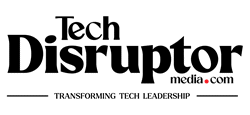As software licensing complexities, audit pressures, and cost concerns reach unprecedented levels, organizations are rethinking their strategies for managing IT assets. To understand how industry leaders are tackling compliance challenges—particularly in the wake of shifting Oracle Java policies and the rapid adoption of hybrid cloud environments.
In conversation with Nisha Sharma, Senior Tech Correspondent at Tech Disruptor Media(TDM), Simon Taylor, Senior Vice President of Global Channel Sales & Alliances at Azul, shares his perspective on the converging priorities of license compliance and security, the critical role of automation, and the emerging trends set to define IT asset management in the years ahead.

SVP of Global Channel Sales & Alliances
Azul
His insights, drawn from new joint research by Azul and the ITAM Forum, highlight the urgent need for proactive, integrated approaches as the financial and operational stakes for non-compliance continue to climb.
TDM: What practices or tools have proved effective in ensuring that license compliance efforts also support organizational security objectives?
Simon Taylor: Three key practices have emerged as essential for aligning license compliance with security goals:
- Unified Visibility (“Single Pane of Glass”)– Tools that offer a consolidated view of licensing across the organization are critical. When this visibility is tied to security posture, vulnerability exposure, and risk analytics, organizations can avoid the inefficiencies and contradictions caused by using disparate systems.
- Automation—Automating the discovery, normalization, and alerting of license usage and associated security risks significantly reduces manual effort. It improves operational efficiency and accelerates the organization’s ability to respond to compliance and security concerns.
- Redundancy Elimination– Many license compliance and security issues stem from redundant, outdated, or unnecessary software use. Identifying and eliminating this “residual” usage not only controls costs and license violations but also minimizes the attack surface and associated security risks.
TDM: What are an organization’s biggest hurdles in maintaining software license compliance, particularly across hybrid cloud and on-prem environments?
Simon Taylor: The biggest challenges are complexity and accuracy. Organizations with hybrid or global infrastructures often face fragmented environments, diverse licensing models, and usage patterns that are hard to track.
This is especially true for sectors like research, logistics, or transportation, where systems may be intermittently connected or difficult to audit. Without autonomous discovery tools that continuously capture license usage data, even in offline or isolated environments and feed that data into a centralized licensing platform, it’s extremely difficult to maintain an accurate and up-to-date compliance position.
TDM: What emerging trends in IT asset and software management do you see shaping an organization’s approach over the next 3-5 years?
Simon Taylor: AI is set to fundamentally reshape ITAM over the next few years. Key trends include:
- Enhanced Visibility: AI will improve asset discovery and provide a more complete picture of license usage across environments.
- Data Normalization & Accuracy: By analyzing data from disparate sources, AI can identify inconsistencies, reduce noise, and increase confidence in reporting.
- Predictive Compliance Monitoring: AI can identify usage patterns, highlight over- or under-utilization, and recommend more optimal license alignments.
- Redundancy Detection: Automation will assist in identifying obsolete or duplicative licenses, improving both cost-efficiency and security posture.
Ultimately, AI’s greatest impact will be in automating repetitive tasks and transforming raw data into actionable insight that informs smarter license and asset strategies.
TDM: How are companies planning to address the increasing complexity of licensing, cloud migration, and compliance regulations in their ITAM strategy?
Simon Taylor: According to our research, 54% of respondents spend over $100K annually on reactive license compliance fixes rather than investing proactively in solutions that reduce risk and improve posture. This reactive cost model will become unsustainable as cloud adoption and ISV-driven audits increase. Organizations must prioritize proactive investment in automation and analytics tools that provide real-time visibility into license usage and related security vulnerabilities.
Companies can adopt continuous compliance approaches that reduce audit exposure when this data is mapped against business trends such as project-based staffing or seasonal resourcing. Importantly, this transparency strengthens vendor negotiation leverage, helping reduce licensing volumes and avoid costly enterprise license agreements.




